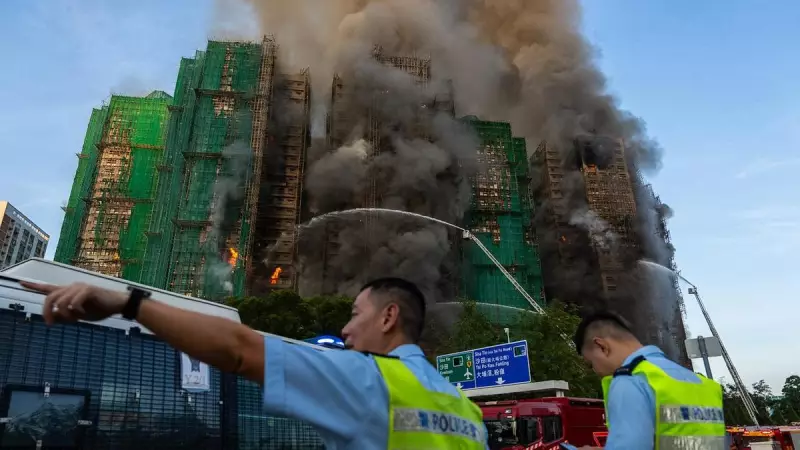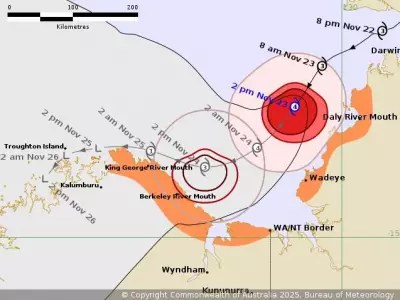
Australian fire safety experts are focusing on why a devastating Hong Kong high-rise fire spread far beyond its starting point with such alarming speed, claiming at least 44 lives in one of the region's deadliest blazes in decades.
Scaffolding Creates Fire 'Highway'
The inferno erupted at the Wang Fuk Court complex in Hong Kong's northern Tai Po district on Wednesday, with flames rapidly consuming multiple floors of the 32-storey towers. Dramatic footage from the scene showed fire leaping between buildings wrapped in traditional bamboo scaffolding and green construction mesh.
Dr Anwar Orabi, a University of Queensland fire safety engineering lecturer who worked in Hong Kong for five years until 2022, told Australian media that determining how the fire spread matters more than finding its initial cause.
"One of the most important objectives for building standards is to limit flame spread beyond its point of origin," Dr Orabi explained. "While determining the source of ignition is important, what matters most here is that the fire was able to spread beyond the spot and building where it started."
The expert suggested the bamboo scaffolding may have provided a "highway" for vertical fire travel while creating warm nests where embers from adjacent structures could ignite.
Arrests Made as Investigation Intensifies
Hong Kong police have arrested three men from a construction company - two directors and one engineering consultant - on suspicion of manslaughter related to the fire. Authorities are investigating whether protective mesh sheets and plastic materials used during maintenance met fire safety standards.
Police discovered some windows on an unaffected building had been sealed with foam material installed by maintenance workers. The combination of bamboo scaffolding and flammable construction materials appears to have created perfect conditions for rapid fire spread.
The death toll represents Hong Kong's deadliest fire since 1948, surpassing the 41 lives lost in a 1996 Kowloon district commercial building blaze. Among the victims was one firefighter, with 45 people remaining hospitalised in critical condition.
International Experts Weigh In
Professor Tripti Singh, director of the National Centre for Timber Durability and Design Life at the University of the Sunshine Coast, described the tragedy as a stark reminder of high-rise vulnerabilities during renovation periods.
"External scaffolding, temporary coverings and the presence of highly combustible materials can dramatically accelerate fire spread, especially in densely populated towers," Professor Singh noted.
She emphasised that safe evacuation becomes extremely difficult once fire breaches multiple floors in high-rise environments, though Australia operates under different building systems and regulations.
The green construction mesh and bamboo scaffolding involved in the blaze represent traditional Chinese architectural elements that Hong Kong authorities had begun phasing out since March for safety reasons. According to the Association for the Rights of Industrial Accident Victims in Hong Kong, this year has seen at least three previous fires involving bamboo scaffolding.
Australian Department of Foreign Affairs officials confirmed no Australians were caught in the fire but are monitoring the situation closely. "Our thoughts are with everyone affected by the horrific fire in Hong Kong, and we extend our deepest sympathies to the victims and their loved ones," a department spokesperson said.
The catastrophe has drawn comparisons to London's 2017 Grenfell Tower disaster that killed 72 people, which was later attributed to flammable cladding and systemic failures in government and construction industry oversight.
As the investigation continues, authorities report 279 people remain uncontactable while 900 survivors are being housed across eight emergency shelters.





